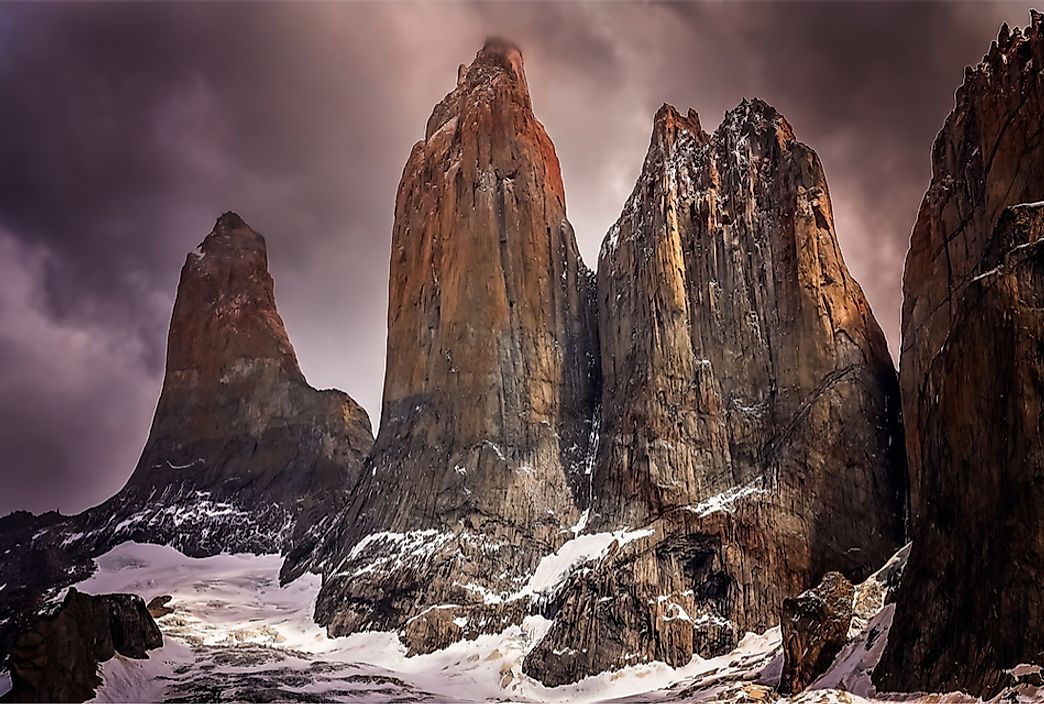Important Facts About the Cordillera Paine?

The Cordillera Paine mountain range is located within Chile's Torres del Paine National Park. The park itself, which has been a UNESCO Biosphere Reserve since 1978, is located in the Patagonia region, which is part of the Ultima Esperanza Province. The Cordillera Paine lies between two ecological regions in the park: the Patagonian Desert and the Magellanic Forest. The Cordillera Paine is believed to be one of the national park's most popular attractions due to its unique physical characteristics, which are primarily the result of ancient glacier erosion that carved out the yellow colored granite rock.
One of the most widely recognized features of the Cordillera Paine mountains is the Cerro Paine Grande mountain peak, which is the highest summit in the range. It has an elevation of 9,462 feet above sea level, although its elevation was previously recorded at approximately 10,600 feet above sea level. Another famous feature of the range is the Towers of Paine, which is a straight line of three granite peaks that resemble towers looming over the park: Central Tower (8,100 feet), North Tower (7,414 feet), and South Tower (8,202 feet).
Wildlife in the Cordillera Paine
The Cordillera Paine consists of granite and gabbro-diorite rock that juts out of the landscape, creating rugged terrain. Additionally, the climate in the range is relatively cold. These factors combine to create a harsh environment that most plants and animals are unable to withstand for long periods of time. The area surrounding the mountains, however, is home to a diverse range of plant and animal species. The Patagonian Desert, which leads into the Cordillera Paine mountains, is filled with tuft grasses and desert shrubs. These plants attract animals such as the desert iguana, burrowing owl, puma, guanaco, grey fox, and pygmy armadillo. On the other side of this group of mountains is the Magellanic subpolar forest, which is classified as a temperate broadleaf and mixed forest habitat. The forest's moist and cool climate means that it is a hospitable habitat for several animal species, many of which are endemic or endangered (or both). The animals that inhabit the Magellanic forest include the viscacha, Magellanic woodpecker, southern river otter (endangered), cougar, Patagonian sierra finch, Patagonian rat (endemic), and Andean condor.
Tourism in the Cordillera Paine
Given its natural beauty and location within Torres del Paine National Park, the Cordillera Paine is a popular tourist destination in Chile. Hiking is one of the most common activities in the park, which is supported by a number of clearly marked trails and shelter houses for hikers. The longest trek offered in the Cordillera Paine can take between 8 and 9 days to complete, as it forms a complete loop around the park. The most famous hike is along the “W” path, named for its w-like shape course. The trek requires approximately 5 days to complete and brings hikers to several sights, including Torres del Paine, Glacier Grey, Lake Pehoe, Laguna Amarga, and Valle del Frances.











